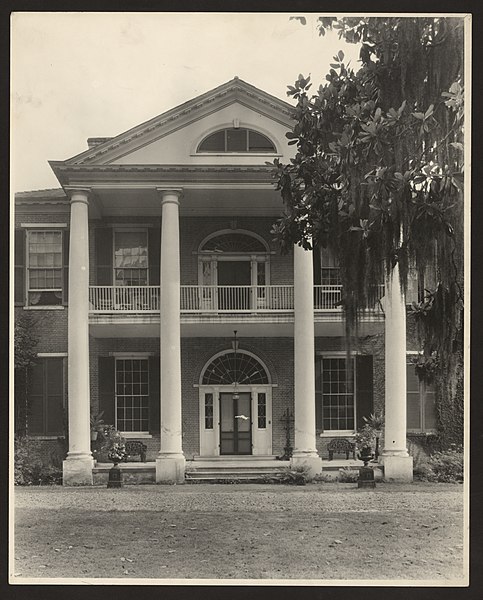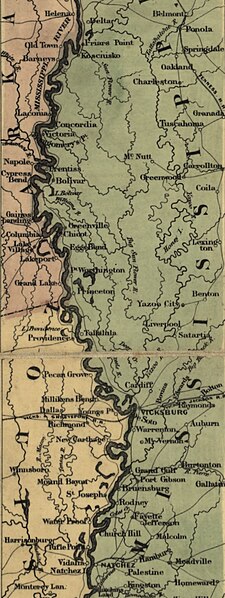Samuel Stillman Boyd, often referred to as S. S. Boyd or Judge Boyd, was a prominent attorney in early 19th-century Mississippi. He also served as a judge briefly, was a leader in the political party, invested in cotton agriculture, speculated in real estate, engaged in large-scale enslavement, and advocated for pro-slavery causes. Boyd wielded significant political influence in his community, initially as a leader in the Whig Party. His name was considered for a seat on the U.S. Supreme Court in both 1852 and 1860.
Samuel Stillman Boyd of Natchez, Mississippi; engraved by J. C. Buttre from a daguerreotype, and published in History of Bowdoin College (1882)
Photograph of the entrance and porch of Arlington, taken in 1934 during the New Deal's Historical American Building Survey. While Arlington still stands, it now exists as a derelict ruin.
Detail of Norman's chart of the lower Mississippi River (1858) displaying a cotton plantation belonging to S. S. Boyd near Glasscock Island [d] on the riverfront in Concordia Parish, Louisiana.
A depiction of the Mississippi River north of Natchez circa 1862 reveals boat landings identified as Providence and Pecan Grove, names that correspond to two of the plantations held by Boyd and Ballard.
Lloyd Tilghman was a Confederate general in the American Civil War.
Tilghman in uniform (c. 1861–1865)
Tilghman's grave marker at Cedar Hill Cemetery
Tilghman monument in Vicksburg National Military Park
Tilghman monument in Woodlawn Cemetery, the Bronx



![Detail of Norman's chart of the lower Mississippi River (1858) displaying a cotton plantation belonging to S. S. Boyd near Glasscock Island [d] on the](https://upload.wikimedia.org/wikipedia/commons/thumb/a/aa/Detail_of_Norman%27s_chart_of_the_lower_Mississippi_River_%281858%29.jpg/600px-Detail_of_Norman%27s_chart_of_the_lower_Mississippi_River_%281858%29.jpg)




